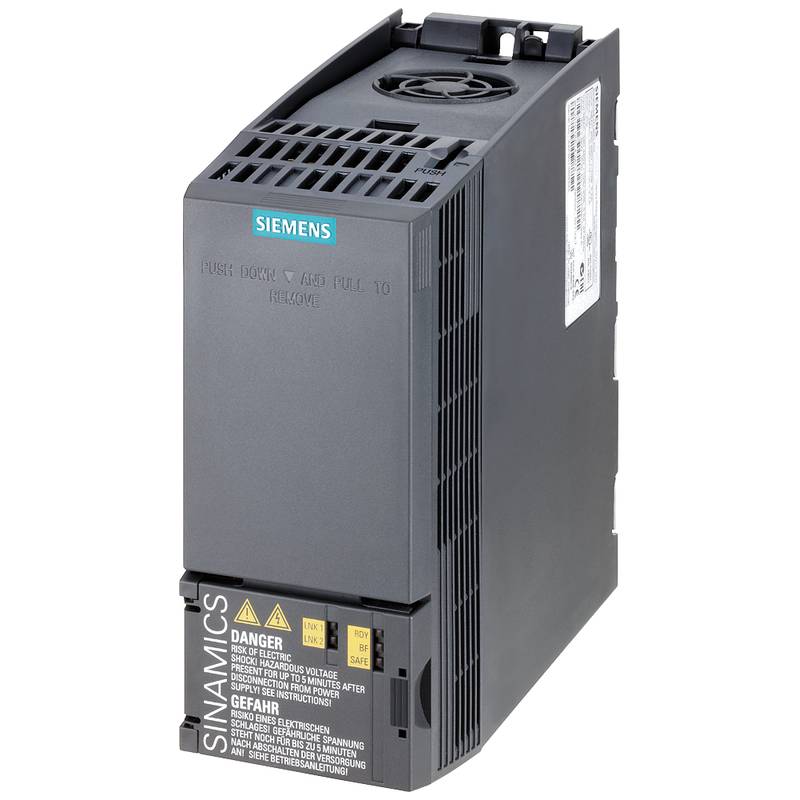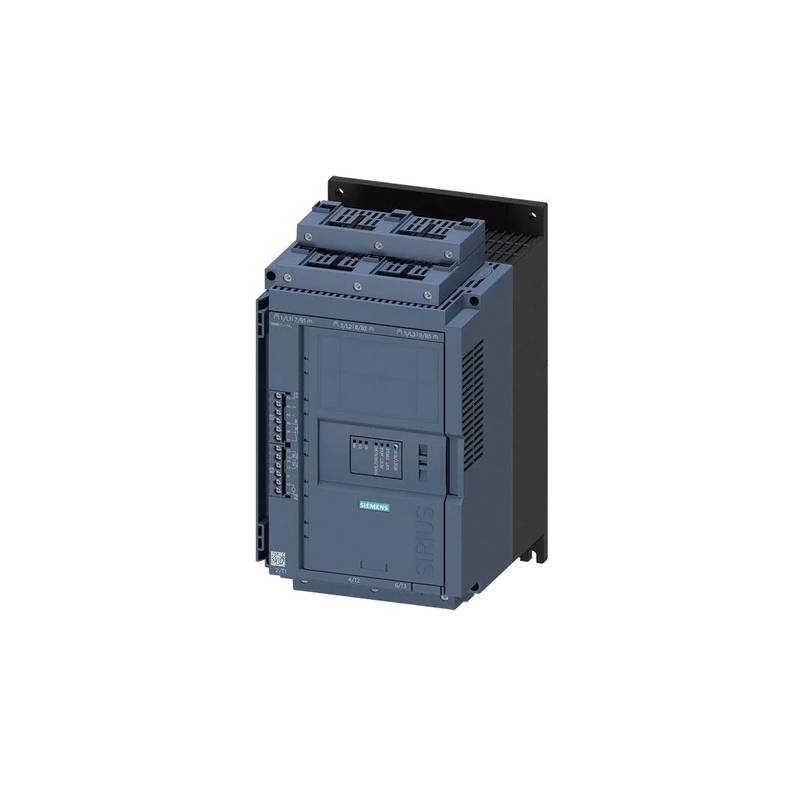
The Delta ECM-E3M-EM1310RSE Small Automation Servo Motor is engineered for precision, reliability, and compact integration in demanding industrial automation tasks. This servo motor distinguishes itself through its high-performance characteristics, including a rated output power of 100W, a robust 230V voltage rating, and an impressive speed range up to 3000 RPM. Its advanced encoder feedback ensures precise positioning and smooth operation, making it an ideal choice for applications requiring meticulous control. The ECM-E3M-EM1310RSE is designed for seamless integration into various automation systems, offering a potent combination of power density and sophisticated control capabilities essential for modern manufacturing environments.
Product Specifications
| Parameter | Value |
| :------------------- | :-------------------------- |
| Model | ECM-E3M-EM1310RSE |
| Rated Output Power | 100W |
| Voltage Rating | 230V |
| Encoder Type | Incremental Encoder |
| Rated Speed | 3000 RPM |
| Frame Size | NEMA 23 Equivalent |
| Insulation Class | Class F |
| Protection Rating | IP54 |
| Brake | With Holding Brake |
| Shaft Type | Keyed Shaft |
Core Features & Market Positioning
The Delta ECM-E3M-EM1310RSE stands out in the competitive landscape of small automation servo motors due to its integrated holding brake, a critical feature for applications requiring immediate stopping power and secure positioning, especially in vertical axis movements or during power loss scenarios. Its NEMA 23 equivalent frame size offers broad compatibility with existing mounting infrastructure, simplifying retrofitting and new system designs. The motor leverages Delta's established reputation for producing reliable and high-performance automation components, positioning it as a dependable solution for cost-sensitive yet demanding automation projects. The inclusion of an incremental encoder provides essential positional feedback, enabling closed-loop control for enhanced accuracy and repeatability, differentiating it from open-loop stepper motor solutions.
Key Application Scenarios
This servo motor is exceptionally well-suited for a variety of automation tasks where precision and compact size are paramount. Common applications include pick-and-place systems in electronics manufacturing, where accurate and rapid movements are crucial for assembly efficiency. It is also widely deployed in packaging machinery for precise dispensing and sealing operations. Furthermore, its robust design and integrated brake make it a strong candidate for robotic end-effectors, material handling equipment on conveyor systems, and automated dispensing units in pharmaceutical or chemical processing industries, all benefiting from its reliable torque and positional accuracy.
Practical System Integration Guidance
Integrating the Delta ECM-E3M-EM1310RSE involves careful attention to motor wiring, encoder connections, and drive configuration. The motor features standard power leads for connection to a compatible Delta servo drive, such as the ASDA-B3 series, ensuring optimal performance and utilizing advanced control algorithms. The incremental encoder utilizes differential signals for robust noise immunity, requiring specific encoder cabling to the drive. Proper grounding and shielding of all cables are essential to prevent electromagnetic interference (EMI) and ensure stable operation. Commissioning typically involves auto-tuning the servo drive to the motor's parameters, which optimizes performance by compensating for mechanical load characteristics, minimizing settling time, and reducing overshoot.
Operation and Risk Mitigation
Safe operation of the Delta ECM-E3M-EM1310RSE servo motor necessitates adherence to electrical safety standards and proper mechanical integration. Ensure the motor is securely mounted to prevent vibration-related failures. The integrated holding brake should be understood as a safety feature; always verify its proper engagement and disengagement through drive commands. Critical fault codes indicated by the associated Delta servo drive should be documented and understood, with common issues including over-current, over-voltage, and encoder errors. Regular inspection of motor wiring for any signs of wear or damage is a key preventative maintenance practice to mitigate operational risks.
Scalability & Long-Term Value
The Delta ECM-E3M-EM1310RSE offers significant scalability and long-term value within a broader automation architecture. Its compatibility with Delta's extensive range of servo drives and PLCs facilitates easy expansion and integration into larger, more complex systems. The standardized NEMA frame size ensures that upgrade paths to higher performance motors from Delta or other manufacturers are straightforward, minimizing redesign effort. For businesses embracing Industry 4.0 principles, these servo motors, when paired with intelligent drives, can contribute to enhanced data collection and analysis for predictive maintenance and process optimization, ensuring a future-proof automation investment.
---
Frequently Asked Questions
What are the primary advantages of the Delta ECM-E3M-EM1310RSE servo motor?
The motor offers high precision and reliability, crucial for demanding automation. Its compact design with an integrated holding brake enhances safety and functionality. The 230V rating and 100W power output make it suitable for various medium-duty tasks.
This servo motor provides excellent positional accuracy and smooth operation due to its advanced encoder feedback. It ensures quick and secure stops with its built-in brake, preventing drift or component damage. The motor's robust construction guarantees longevity in industrial environments.
It's designed for easy integration into existing systems thanks to its NEMA 23 equivalent frame size. This facilitates retrofitting and minimizes installation complexities. The motor's performance characteristics are well-matched for pick-and-place, packaging, and assembly line applications.
How does the encoder feedback on the ECM-E3M-EM1310RSE improve performance?
The incremental encoder provides real-time positional data, enabling closed-loop control for precise movements. This feedback loop allows the servo drive to continuously monitor and adjust the motor's position, correcting any deviations instantly.
This high-resolution feedback ensures repeatable accuracy, which is essential for tasks requiring consistent outcomes, such as automated assembly or precise dispensing. The servo system can achieve very tight tolerances and minimal positional error.
With accurate positional feedback, the servo motor can execute complex motion profiles smoothly, minimizing vibrations and mechanical stress. This leads to improved product quality and extended machine lifespan.
What are the typical applications for a 100W servo motor like the ECM-E3M-EM1310RSE?
This motor is ideal for pick-and-place robots on assembly lines where rapid and accurate part manipulation is key. It's also used in automated inspection systems requiring precise positioning of cameras or sensors.
In packaging machinery, it excels in tasks like precise sealing, labeling, or intricate carton manipulation. It can also power small robotic arms for intricate tasks in tight spaces.
Other applications include precise material handling on conveyor belts, automated dispensing systems for liquids or solids, and general-purpose automation where controlled motion is needed.
What is the significance of the integrated holding brake in this servo motor?
The holding brake provides a mechanical lock when the motor is de-energized or during power interruptions. This prevents the load from moving unintentionally, which is critical for safety and maintaining position.
It's particularly important for applications with vertical axes, like robotic arms or material lifts, where gravity could cause the load to fall. The brake ensures the load remains securely held in place.
The brake allows for quick stopping and holding, improving cycle times and operational safety. It reduces the need for external braking systems, simplifying mechanical design and reducing overall system cost.
How do I connect the Delta ECM-E3M-EM1310RSE servo motor to a servo drive?
Connect the motor's power leads (U, V, W) to the corresponding terminals on the Delta servo drive. Ensure proper polarity and secure connections to prevent intermittent operation or faults.
Connect the encoder cable from the motor to the designated encoder input port on the servo drive. Use shielded cables to minimize electromagnetic interference and ensure signal integrity.
Consult the specific servo drive manual for detailed wiring diagrams and configuration settings. Proper grounding of both the motor and drive is crucial for electrical safety and optimal performance.
What technical parameters should I consider when selecting a servo drive for this motor?
Ensure the servo drive's voltage and current ratings are compatible with the ECM-E3M-EM1310RSE's specifications. A 230V drive is required, with sufficient continuous and peak current capacity for the motor's torque demands.
The drive must support the motor's encoder type (incremental) and offer the necessary control modes (e.g., position, velocity, torque). Features like auto-tuning and advanced diagnostics are highly beneficial.
Consider the drive's communication interface (e.g., Modbus, EtherNet/IP) for integration into a larger automation system. Power regeneration capabilities can also improve energy efficiency in applications with frequent deceleration.
Can this servo motor be used in high-speed applications?
Yes, the ECM-E3M-EM1310RSE is rated for speeds up to 3000 RPM, making it suitable for many high-speed automation tasks. Its design ensures stable operation within this speed range.
Achieving maximum speed depends on the load characteristics and the servo drive's capabilities. Proper tuning of the drive parameters is essential to optimize performance at higher speeds.
While capable of high speeds, continuous operation at the absolute maximum speed may depend on thermal considerations and the specific application's duty cycle. Monitoring motor temperature is advisable.
What safety precautions should be taken when operating this servo motor?
Always ensure the motor is securely mounted to prevent vibration-induced damage or movement. Verify that all electrical connections are properly insulated and grounded.
Before performing any maintenance or inspection, disconnect power to the motor and drive. Utilize the integrated holding brake as a safety measure during power-off scenarios.
Familiarize yourself with the servo drive's fault codes and emergency stop procedures. Ensure personnel working with the equipment are adequately trained in industrial automation safety practices.
How does the insulation class (Class F) affect the motor's operation?
Class F insulation provides a higher thermal tolerance compared to lower insulation classes. This means the motor can operate at higher temperatures without insulation degradation, offering increased reliability.
This higher thermal capacity allows for more robust performance under demanding conditions or in environments with elevated ambient temperatures. It contributes to the motor's longevity and reduces the risk of premature failure.
The insulation class is a critical factor in determining the motor's maximum allowable operating temperature and its suitability for continuous duty cycles in various industrial settings.
What is the benefit of a keyed shaft on this servo motor?
A keyed shaft ensures a positive mechanical connection between the motor shaft and the driven component, such as a pulley or gear. This prevents slippage and ensures accurate torque transmission.
The keyway provides a reliable method for aligning and securing the coupling, which is crucial for applications requiring precise speed and positioning. It guarantees that the driven load rotates in sync with the motor.
This keyed shaft design contributes to the overall system's robustness and accuracy. It simplifies the mechanical interface and ensures that the motor's precise motion is effectively transferred to the application.

























